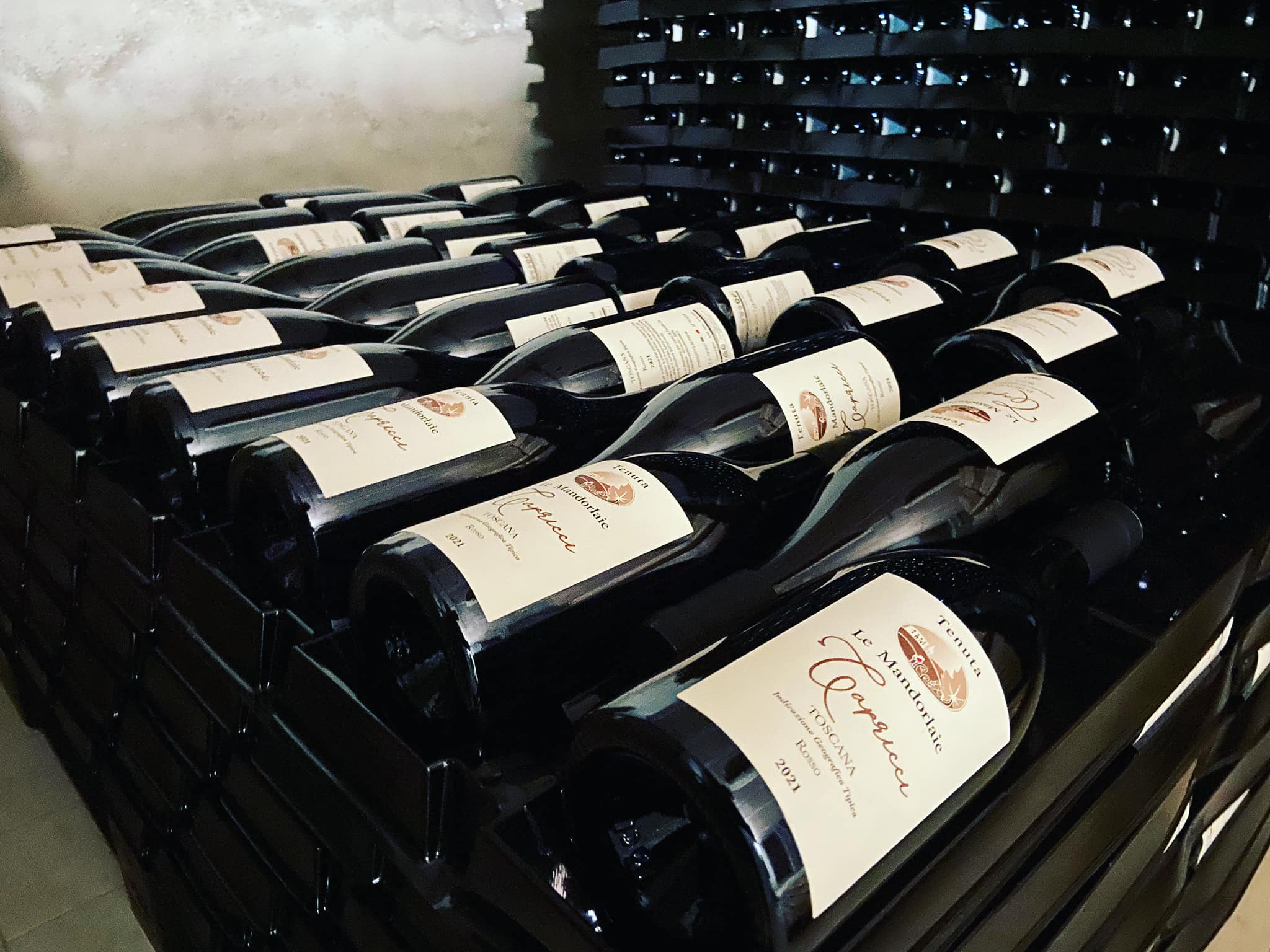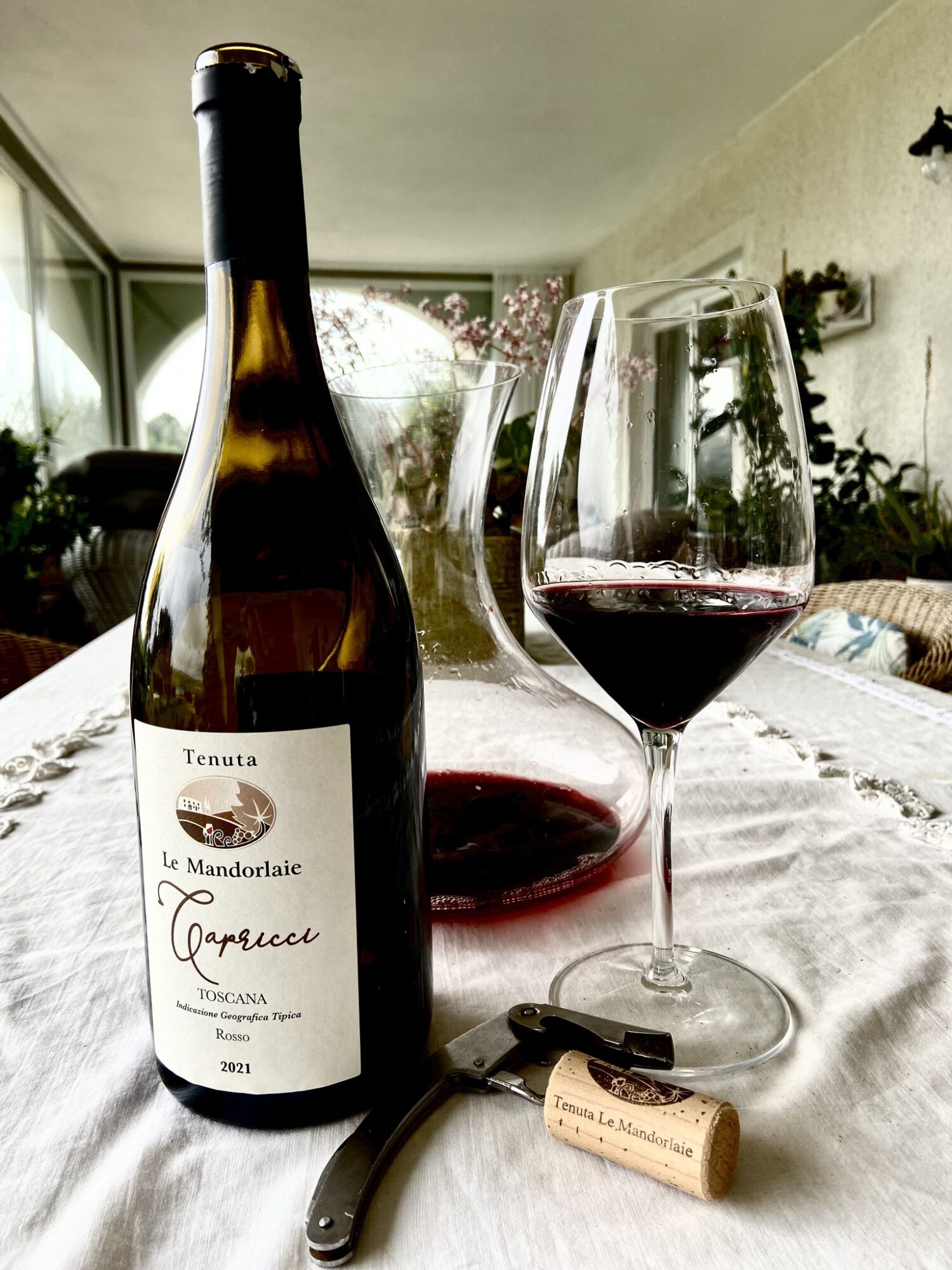
Discovering the Tastes and Flavours of Capricci, Our Oak-Aged Single Vineyard Sangiovese
 Welcome to the world of Capricci, a special wine crafted from the Sangiovese grape variety, nurtured in the picturesque vineyards of Tuscany. Whether you’re new to wine or have a budding interest, exploring Capricci can be an exciting journey. This guide will walk you through the tastes and flavors you can expect from this exceptional oak-aged single vineyard Sangiovese, helping you understand what makes it unique and enjoyable.
Welcome to the world of Capricci, a special wine crafted from the Sangiovese grape variety, nurtured in the picturesque vineyards of Tuscany. Whether you’re new to wine or have a budding interest, exploring Capricci can be an exciting journey. This guide will walk you through the tastes and flavors you can expect from this exceptional oak-aged single vineyard Sangiovese, helping you understand what makes it unique and enjoyable.
The Essence of Sangiovese
Before diving into Capricci, let’s get to know Sangiovese, the star of this wine. Sangiovese is the most widely planted grape in Italy and is known for its versatility and ability to express the characteristics of the soil and environment where it is grown. The name “Sangiovese” translates to “the blood of Jupiter,” reflecting its esteemed status in Italian winemaking.
The Vineyard and Terroir
Capricci is produced from a single vineyard, meaning all the grapes come from a specific plot of land. This single vineyard approach ensures that the wine captures the unique characteristics of its terroir – the combination of soil, climate, and landscape that influences the grapes.
Soil
The soil in our vineyard is rich and varied, composed of clay, limestone, and marl. These elements contribute to the complexity of the wine:
- Clay: Helps retain moisture, providing the vines with water during dry periods, leading to well-hydrated grapes with balanced flavors.
- Limestone: Adds minerality and bright acidity to the wine, enhancing its freshness and vibrancy.
- Marl: A mix of clay and limestone that supports vine health and contributes to the wine’s structure and depth.
Climate
Tuscany’s warm Mediterranean climate is ideal for growing Sangiovese. The region enjoys hot, sunny days and cool nights, which help the grapes develop their full range of flavors. The temperature variations also preserve the natural acidity of the grapes, crucial for creating a well-balanced wine.
The Oak Aging Process
Capricci is oak-aged, which adds another layer of complexity to the wine. Aging wine in oak barrels allows it to interact with the wood, which imparts additional flavors and aromas. The oak aging process for Capricci includes:
- New Oak Barrels: These barrels are used to introduce flavors like vanilla, spice, and toast to the wine.
- Aging Duration: Capricci is aged for a period that enhances its structure and smoothness without overpowering its natural fruit characteristics.
Tasting Capricci, What to Expect
When you pour a glass of Capricci, take a moment to appreciate its deep ruby color, which hints at the rich flavors to come. Here’s a simple guide to understanding the tastes and flavors of this wine:
Aroma
Begin by swirling the wine gently in your glass to release its aromas. Bring the glass to your nose and take a deep sniff. You’ll notice a bouquet of scents, including:
- Red Fruits: Cherry, raspberry, and strawberry are prominent, offering a sweet and inviting aroma.
- Floral Notes: Hints of violet and rose add an elegant touch to the bouquet.
- Spices: Subtle aromas of cinnamon, clove, and vanilla from the oak aging process.
Flavor Profile
Now, take a sip of Capricci and let it coat your palate. The flavors unfold in layers, providing a complex and enjoyable experience:
- Fruit Forward: The initial taste is dominated by the bright, juicy flavors of red cherry, plum, and raspberry. These fruit flavors are the hallmark of Sangiovese and provide a fresh and lively character.
- Earthiness: As you savor the wine, earthy notes of dried herbs, leather, and tobacco emerge, reflecting the influence of the vineyard’s soil and environment.
- Spice and Oak: The oak aging adds subtle hints of vanilla, toast, and baking spices like cinnamon and clove, which complement the fruit and earthy flavors without overwhelming them.
Texture and Structure
Capricci’s texture and structure are key components of its appeal:
- Acidity: Sangiovese is known for its high acidity, which gives the wine a refreshing quality and makes it an excellent match for food. The acidity in Capricci is well-balanced, enhancing its flavors and providing a crisp finish.
- Tannins: Tannins are compounds found in grape skins and seeds that give wine its structure and astringency. Capricci has smooth, well-integrated tannins that provide a pleasant grip and contribute to the wine’s aging potential.
- Body: The wine has a medium to full body, offering a satisfying mouthfeel without being too heavy. The balance of fruit, acidity, and tannins creates a harmonious and enjoyable wine.
Food Pairings
Capricci’s versatile flavor profile makes it a fantastic companion to a variety of dishes. Here are some pairing suggestions to enhance your wine experience:
- Italian Classics: Capricci pairs beautifully with traditional Italian dishes like pasta with tomato-based sauces, lasagna, and pizza. The acidity of the wine complements the acidity of the tomatoes, creating a balanced and delightful combination.
- Grilled Meats: The wine’s structure and tannins make it an excellent match for grilled meats such as steak, lamb, and pork. The earthy and spicy notes in the wine complement the savory flavors of the meat.
- Cheese: Enjoy Capricci with a selection of aged cheeses like Pecorino, Parmesan, and Asiago. The wine’s acidity and tannins balance the richness of the cheese, enhancing both the wine and the food.
- Vegetarian Dishes: Capricci also pairs well with vegetarian dishes, especially those featuring roasted vegetables, mushrooms, and herbs. Try it with a hearty mushroom risotto or a vegetable lasagna.
Enjoying Capricci, Tips for New Wine Drinkers
If you’re new to wine, here are some simple tips to help you get the most out of your Capricci experience:
- Serve at the Right Temperature: Capricci is best enjoyed at a slightly cool temperature, around 60-65°F (15-18°C). This helps preserve the wine’s vibrant flavors and aromas. If the wine is too warm, it may taste overly alcoholic; if too cold, the flavors may be muted.
- Use the Right Glass: A medium-sized wine glass with a slightly tapered rim is ideal for Sangiovese. This shape helps concentrate the aromas, enhancing your tasting experience.
- Decanting: Decanting the wine for about 30 minutes before drinking can help open up its flavors and soften the tannins. Pour the wine into a decanter and let it breathe before serving.
- Savor Slowly: Take your time to enjoy each sip of Capricci. Notice how the flavors evolve on your palate and how the wine changes as it breathes.
- Experiment with Food Pairings: Don’t be afraid to try Capricci with different foods to find your favorite combinations. Wine and food pairing is a fun and personal experience.
Capricci, our oak-aged single vineyard Sangiovese IGT Toscana Rosso, offers a delightful journey through the tastes and flavors of Tuscany. With its bright fruit notes, earthy undertones, and subtle spice from oak aging, it provides a complex yet approachable wine experience. Whether you’re enjoying it with a meal or savoring it on its own, Capricci invites you to explore the rich heritage and vibrant flavors of Sangiovese.
Cheers to discovering the joys of wine, one glass at a time!
